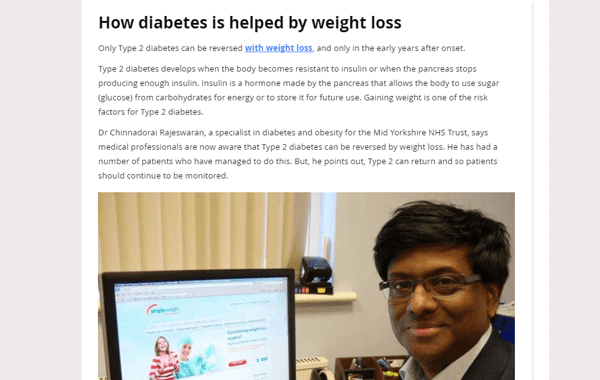Infertility is one of the oldest problems faced by human beings. A basic instinct of any animal is to survive and procreate. Any hindrance to these basic instincts causes huge physical, psychological and social problems. Human beings are no different! Irrespective of the country or race, proving our ability to procreate is an innate urge.
Based on data provided by the Society of Assisted Reproduction, infertility in 2008 affected about 10 to 14 percent of the Indian population. Infertility among the urban Indians is comparable to the prevalence in developed countries. Stigmatisation of infertility, more so in rural India disproportionately affects women. Discrimination and stigmatisation is also prevalent in the western world.
When I first heard about the “Hole in the Rock”, like many other doctors, I was initially sceptical and thought it was another old wives’ tale. However, after spending a few hours and analysing the ritual as an endocrinologist, it dawned on me that the advice is the same as I would have provided my patients in the United Kingdom!
In this article, I will be exploring this fascinating folklore from northern India and provide an endocrinologist’s interpretation of this story of fertility treatment and discuss what someone with infertility might gain from this.
The Story of “Hole in the Rock”
Mukteshwar is a village in one of the northern states of India called Uttarakhand. This remote village rests among the hills at an altitude of about 2070 metres (7500 feet). There is Hindu temple in Mukteshwar which is claimed to be 350 years old. This has also been mentioned in Jim Corbett’s book “The Temple Tiger” and “Man-eaters of Kumaon”. There is a rock formation close to the temple called “Chauli ki Jali”. ‘Chauli’ means rock and ‘Jali’ means hole in the local Indian dialect.
There is a hole in the rock and the story is that on Mahashivratri, an auspicious day celebrated as “the great night of Lord Shiva”, if women who are unable to bear children climb the rock, enter the hole and come out the other side, they can get pregnant and will be blessed with a child. The hole in the rock formation is about a kilometre above the land nearby. Women have to climb at least 900 metres before they can even reach the hole.
The whole family supports the woman, who is determined to become pregnant. Preparations to climb this rock and attend this festival starts at least a year in advance. The women start to eat more healthily and work to improve their fitness level. The family as a whole may start to practise rock climbing, just to support her. This is what we call focus!
The science behind the myth
Even today, women travel to this mountain range and make the effort to get through this hole in the rock in order to conceive. But is there any science behind this seemingly unusual method of fertility treatment?
Well, as an endocrinologist and bariatric physician, I think, they are able to achieve their goal by following the steps which one should follow for successful long term sustained weight loss.
The five steps to success include:
1. Motivation and focus
2. Accountability
3. Improving cardiovascular fitness
4. Heart and lung conditioning
5. Reduction in Body Mass Index and waist circumference
Motivation and focus
In the first instance, they stay motivated and focussed on conceiving and having a baby in a year’s time.
Unintentionally they had been following the so-called SMART (Specific, Measurable, Attainable, Relevant and Time-bound) goal system. In my 25 years’ experience in endocrinology and obesity, I have noticed that people who engage regularly with any evidence-based weight loss plan, lose weight. Those who engage regularly also sustain their weight for a longer duration. In most weight loss programmes, the dropout rates are around fifty percent. No wonder so many people do not succeed in weight loss or they regain the weight they have lost. In fact, after a diet, some people can regain more weight than they have lost.
This age-old ritual in the village of Mukteshwar serves as a constant reminder to the woman that their focus and persistence will pay off. Her activity, meals, sleep and mood are monitored by most of the family members. She is well supported in achieving her intermediate goals, so as to achieve her ultimate goal successfully.
Accountability
People in the village regularly discuss the families with women planning to get pregnant and those who would be visiting the temple that year. So, she is accountable to the whole family and local community too. Being focussed, motivated and accountable plays a major role in reaching her goal, more so a weight related goal.
Participants in reality television shows like the “Biggest loser” show people losing a considerable amount of weight during the period of shooting. This again is due to accountability to the family, television viewers and no doubt the prize money. This fosters greater motivation. I am sure participants who lose motivation after the show is terminated invariably regain the weight they have lost.
Improving cardiovascular fitness and heart/lung conditioning
The next step is conditioning your heart and lungs to higher altitudes. As you go to higher altitudes, air becomes thinner. There is less oxygen and lower air pressure. In order for your lungs to breathe air without any effort, the pressure of the air around you should be higher than inside your body. However, at high altitudes, the outside air pressure is considerably lower. So, mountain climbers spend several weeks and months to gradually get accustomed to the thinner air at higher altitudes and make an ascent gradually.
Before they get to the “Hole in the Rock”, women have to get acclimatised. All this is factored into their rituals. Women have to go to several of the smaller temples situated at lower altitude once a month. Women in this village practice climbing smaller hills and go to these temples regularly.
Heart and lung conditioning are important for a successful pregnancy. Pregnancy alters lung function and could worsen any pre-existing respiratory problems. Pregnant women with respiratory problems like asthma pose a huge challenge to the growing baby in the womb. Similarly, pregnancy puts strain on the heart and circulatory system. During pregnancy, blood volume can increase by up to 50 percent in order to ensure the baby is well nourished.
In addition, labour and delivery adds strain on the heart and lungs, more so when the woman is pushing during labour.
Reduction in waist circumference and Body Mass Index (BMI)
It is scientifically known that obesity contributes to infertility for both men and women. Weight loss helps to improve fertility. It is not just weight loss alone, but also reduction in waist circumference that makes the difference.
A high waist circumference indicates excess visceral adipose tissue. Visceral adipose tissue is known to increase the risk of infertility, heart attack, stroke, diabetes and other serious cardiometabolic conditions. Visceral adipose tissue contributes to several metabolic functions in the body. Reducing waist circumference helps reduce visceral adipose tissue and thereby reduces the risk of several medical conditions.
Why does increasing weight lead to infertility?
In women, increasing weight leads to a hormonal imbalance. Predominantly, the male hormone testosterone is higher than it should be. Adipose or fat tissue produces several chemicals and hormones. Fat tissue promotes insulin resistance. Increased levels of insulin in the body promote testosterone production by the ovaries. The female hormone, oestrogen, is relatively lower and this contributes to infertility.
In men, obesity not only physically impairs sexual activity and promotes performance anxiety but also reduces testosterone levels. The scrotum is outside the body, so as to keep the testicles two degrees centigrade below the body temperature. However, in an obese man, the scrotum is kept warm with the protuberant belly and thighs. This results in inadequate testosterone being produced, contributing to erectile dysfunction and infertility.
When the women are planning to go to the “Hole in the rock”, her husband also supports her and he accompanies her in all her activities and improves his exercise tolerance and loses weight.
Well, I can’t go to the “Hole in the Rock”, what should I do instead?
Not all of us can travel to India in order to complete this challenging feat. However, we can learn from the wisdom of the folks in the Himalayas.
To improve fertility, for both men and women, follow these top 10 tips:
1. Reach and maintain a healthy weight
2. Quit smoking
3. Reduce alcohol intake to less than 14 units per week
4. Ensure that you have enough good quality sleep
5. Rule out any potential sexually transmitted diseases by testing and treating
6. Exercise regularly and improve fitness levels
7. Reduce caffeine intake
8. Have timely, balanced meals with fruits and vegetables as part of your diet
9. Reduce stress and adopt relaxation techniques such as meditation
10. Avoid processed food and foods high in salt, sugar and fat
Weight loss, cardiovascular fitness, good sleep hygiene and a stress-free life would improve a woman’s chances of conceiving. There are, however, several other causes of infertility which need to be investigated and cannot be dealt with by a healthy lifestyle alone. One key factor is that her partner has to be healthy and have an adequate sperm count. In addition, he should not have any structural problems with his sex organs and should be free from any hormonal imbalances. Infertility may also arise due to genetic defects and anatomical defects of the uterus, ovaries or fallopian tube. For this, it is important to consult your physician and seek appropriate care.
Before anyone embarks on a detailed investigation for treating infertility, try following the simple changes outlined above and set yourself a healthy regime, similar to the women in this Himalayan village. Wishing you the best of luck in your journey!
Read about Weight Loss for Infertility here: https://thelondonobesityclinic.co.in/weight-loss-for-infertility/
Simplyweight’s Specialist Online Weight Loss Plan has been designed to bring decades of clinical experience to people at an affordable price. To learn more, start your 7-day free trial today: https://app.simplyweight.in/subscribe/free-trial













